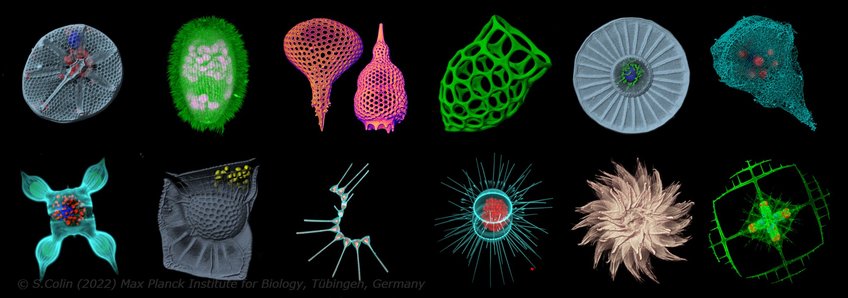
Cell Safari
Development of a pheno-genomic workflow to unveil the biology of environmental protists using 3D imaging combined with omics technologies, one cell at a time.
Protists (unicellular eukaryotes) represent the vast majority of eukaryotic diversity, from which only a few lineages, evolved multicellularity. Owing to an incredible diversity of metabolic capabilities, morphologies, life cycles and behaviours, protists occupy key positions in global ecological networks as primary producers, predators, mixotrophs, symbionts and parasites.
Nevertheless, many taxa remain poorly or partially described, as they have mainly been detected from environmental DNA. As a result, certain key biological features are still missing (e.g. morphology, life cycle, biotic interaction). Our main objective is to combine 3D microscopy with cell sorting methodologies in order to associate a detailed phenotype with a genotype at the single cell level. As case studies, we are focusing on holobionts involving protists, and more specifically on photosymbiotic relationships.
- Many remote ecosystems require samples to be preserved for study in the laboratory. We are contributing to the exploration of three directions: (i) the development of live imaging tools for field work (e.g. in-flow microscopy and live staining); (ii) the optimisation of sample preservation for correlative approaches (e.g. phenogenomics); and (iii) the culture of microbial holobionts.
- In addition, the correlation between advanced microscopy and genomic analysis remains a challenge for environmental single cells. We are working on the automation of an image-based workflow to identify and sort objects of interest within highly diverse populations of particles. Our approach favours the accuracy of target detection and the versatility of the sorting process, at the cost of lower throughput than current methods (e.g. FACS).
- Ultimately, we believe that phenogenomic data will support the development of robust classification models for AI-based annotation of the high-throughput microscopy dataset generated from environmental samples.